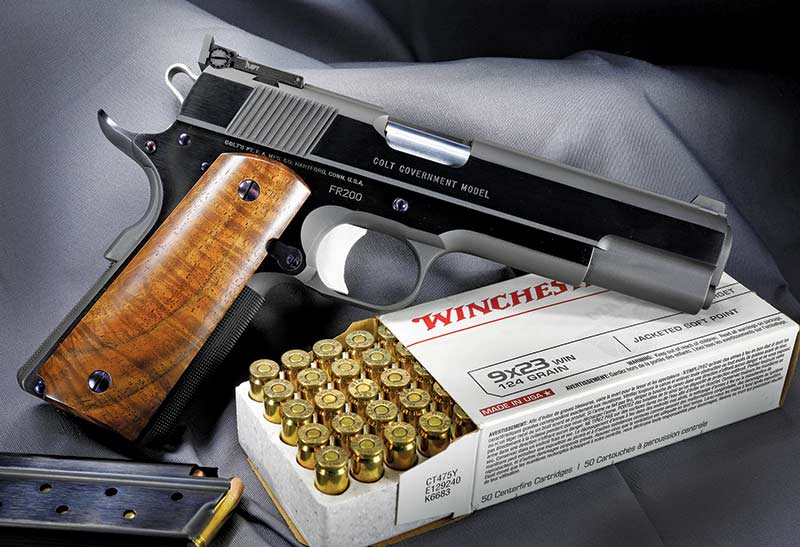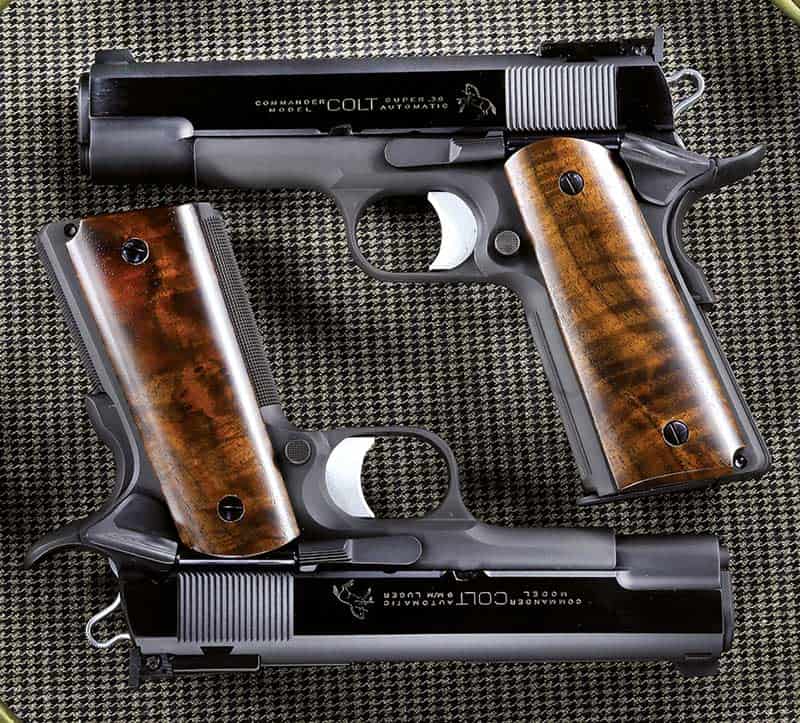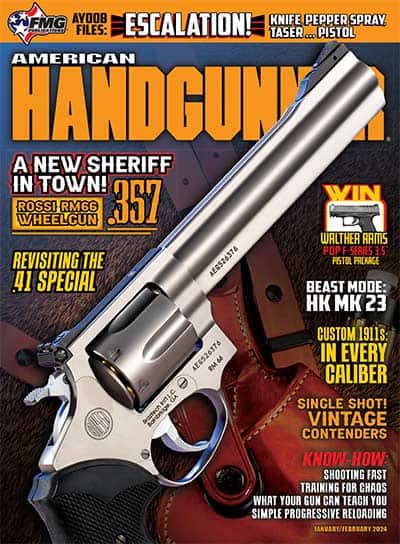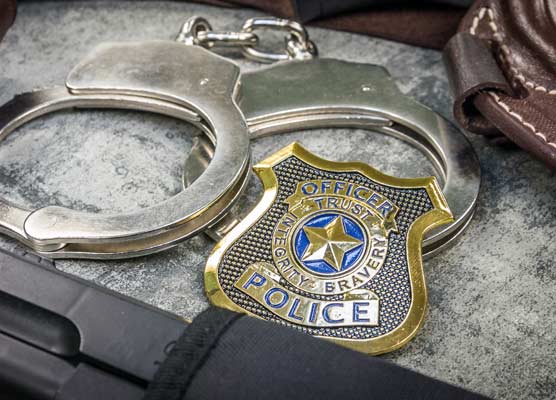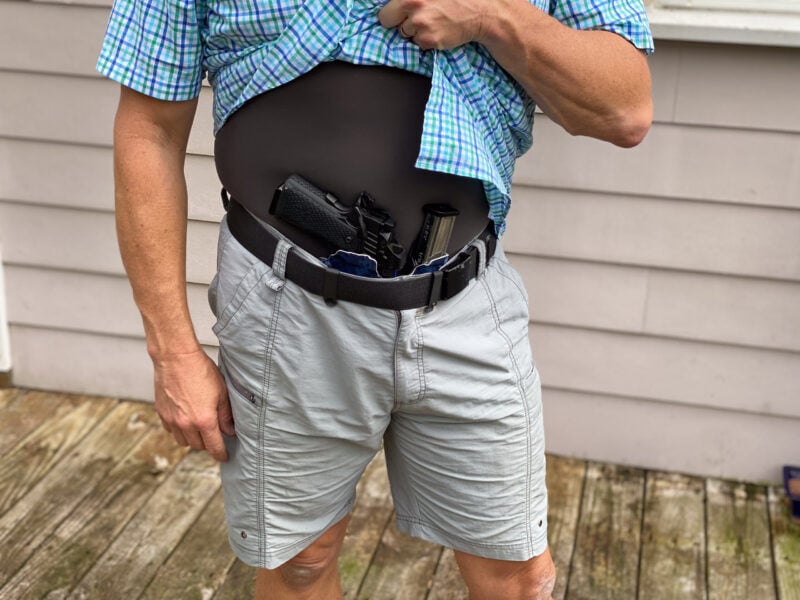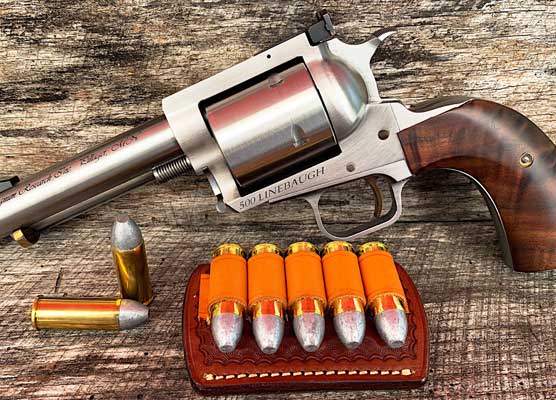Better By the Dozen
The Many Calibers of the 1911
Question: What popular handgun was made in twelve different calibers by the factory?
Answer: The Colt 1911.
Not many people get that right — even the experts.
A few years ago, I was asked by a collector to build one of each of the Colt 1911 caliber handguns. The trick was they all would be modified to look the same. His list included a BoMar style rear sight, a new hard fit barrel, front strap checkering, beavertail grip safety and classic wood grips.
I agreed to the project, thinking it would be a fun challenge. Little did I know I had four years of work ahead of me. I was lucky the collector took on the job of finding all the base guns — not an easy task.
To be honest, I had no idea how many guns there would be. I knew of a few oddball calibers. I had always known about the .38 AMU from my bullseye days shooting at Fort Benning, Georgia home of the Army Marksmanship Unit, that created the caliber. I had heard of a .30 Luger but never really saw one to confirm they made it. Then, of course, there were the 10mm Deltas, the Ace and .38 Mid-Range
And It Begins …
So, the journey began with base guns coming in and me formulating a build sheet. I still did not know the total number of guns, but I was guessing maybe seven. For the rear sight, I wanted original BoMars, but that was not possible. BoMar was long out of business. So, I contacted Da Keng, owner of Kensight in Atlanta. I had known Da for many years and asked if I could have a special run of rear sights made for the project. The rear sights would be a logo delete and have sight blade serrations similar to BoMar, which stopped short of the top of the blade. He agreed to a run of 75, but I did not have to buy all of them, which would have been a large expense. So, I bought 25, which I could use for inventory. Next, I selected the internal parts. They would all be by Extreme Engineering. Bob and Ryan Perkins make fantastic parts, so I planned on all internals by them. For the grips, I contacted Craig Spegel just to get locked into his build list. I said I would need all the grips from the same block of wood. How many I did not know but hinted at eight.
Adding this project to the normal workload was also a task. I needed a little help and was concerned about the consistency of this many guns over a number of years. Checkering would be a good place to bring in Pete Single, who does the best checkering in the business
The Project Expands
As my client started buying base guns, the list grew. Who knew they made a 9mm Steyr? Or a .40 S&W? The first few guns started coming in: a 45 Commander, a 9mm Commander and a .38 Super Government. Each would be stripped of the factory parts. The frames and slides were typically loose and required welding. Lines were straightened, and beavertails cut in. For the project, I also decided on flat tops and serrations. The front sights would be dovetailed. I selected a Heinie front sight in black since some of the calibers were only made in Commander size, and the Heinie sight had better proportions than the standard Novak cut.
Barrels would be Kart. This later would have to change for some calibers that Kart did not produce. The first three started moving along in the shop. While cutting rear sights for the buried BoMar style Kensight I did them all at once, just to keep the numbers in my head and have consistency. As it worked out, I would do most of this project on Sunday nights in my shop. Sunday was a time that I could work with little distraction. The BoMar requires a number of cuts and cutters along with drilling and tapping. This was done after the slides were flattened and 40 lines per inch serrations were added.
This was a good time to get the frame to Pete Single for checkering. The barrels were on order with Kart.
And More Calibers …
Now a few more base guns showed up — 10mm Delta, 9mm Steyr and a .38 AMU — all really nice. The AMU was a gun I always wanted. The client found a great one with three original Colt magazines and a surprise second slide, which he gave me as a gift. The 9mm Steyr was built for the European market, where I’m told you cannot have a NATO caliber for a commercial gun. It came with no ammo, but I found some at a friend’s shop who had oddball ammo in his back room. The Delta was a nice blue gun with the typical light roll marks and Delta insignia. The rolls on the delta had to be redone, so I made a call to Dave Clevinger in Colorado. Dave does a great job with re-engraving roll marks.
As more donor guns came in, I would batch machine slides for flat tops, serrations and sight cuts. I also would start to get some of the major frame metal work done before shipping the frames off to Pete Single. Some of the more obscure calibers required either a new barrel or micro-welding on the existing barrel for better lock-up. For some new barrels, I contacted BarSto, which was an original supplier to Colt for calibers like 9mm Steyr, .40 Smith & Wesson and .30 Luger.
.30 Luger
The .30 Luger was a very rare specimen and in great condition with the original box. I think they made 500 for the Italian market. I made the decision not to cut up this gun. Instead, I would convert a 9mm Lightweight Commander to a .30 Luger. The “9mm Luger” roll mark could be converted to “.30 Luger” easily by micro welding the “9mm” and engraving “.30” next to Luger in its place. This slide went to Brian Powley for the engraving as well as a magazine, which was treated the same way.
Some of the base guns were lightweights like the .30 Luger and 9mm Commander; they would need a new finish. Since aluminum can be tricky to get done right, I selected IonBond. It’s a good finish for aluminum.
.40 S&W & .38 Mid-Range
Next was the .40 S&W Colt. From what I understand, they only made these for two years; one in stainless and one in blue. The .40 was not marked on the slide but had .40 Win marked on the barrel. The slide and frame were in the “Series 80” configuration from Colt. This one was another instance where we had an original but could not easily cut it up and make a replacement. A 9×23 was used to make the .40 S&W, which was only available in stainless, but I needed blue. The breech face was reamed to accept the .40 S&W rim.
The most complex gun was the .38 Mid-Range. This dedicated target gun was made like a National Match or Gold Cup with a wide trigger, Elliason sight and vertical serrations on the frame. Pete Single comes to the rescue. Pete cut out the front strap and welded in a new piece of steel, which he checkered to match all the other frames. While he was doing that, I fabricated a new trigger from an EGW blank to match the others.
The .455 Eley
ls. The last one to do was the .455 Eley. The client found a 1914-made model. The .455 was made for the British Army in WWI as part of a “lend-lease” program. Many came back to the U.S. Those that made their way back had the unfortunate fate of losing their barrels. The .455 ammo was too hard to find, so barrels were switched out for .45 1911 Colts. The frame of the .455 had a wider magwell but would take the .45 ACP magazine.
After about three years of searching, we got a complete .455, which was a patina brown color but had the original barrel and a magazine. Not cheap. The barrel was micro welded and refit, the bore was not perfect but shootable. For ammo, we found one cartridge, which cost us $20 dollars. Later, we found a vendor who made the .455 ammo from converted .45 Colt brass.
All said and done, the project encompassed a dozen caliber samples of the 1911 — .22LR, 9mm Luger, 9mm Steyr, 9×23, .30 Luger, .38 Super, .38 Special, .38 AMU, .40 S&W, 10mm, .45 ACP and .455 Eley.


